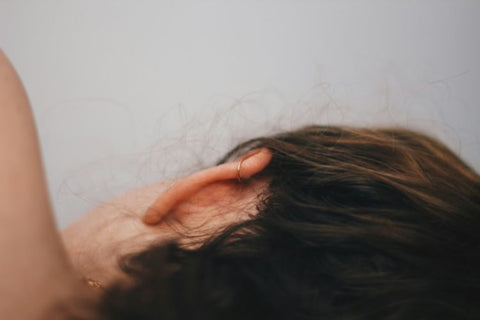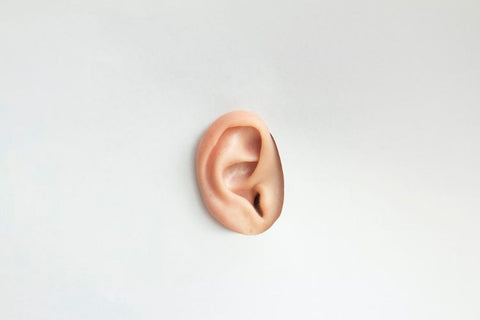Ear pain and infections are common problems affecting people of all ages. This blog will focus on understanding ear pain and infections, and how Polysporin Antibiotic Plus Pain Relief Ear Drops can be used to manage these issues.
Polysporin Ear Drops
Polysporin Ear Drops are a combination antibiotic and pain reliever that can be used to treat infections of the external ear, such as swimmer's ear. They can also be used to relieve ear pain associated with other ear conditions, such as earwax buildup.
Five Signs that May Indicate the Need for Polysporin Ear Drops
- Ear pain: This is the most common symptom of ear infections and earwax buildup. Ear pain can be mild or severe, and it may be worse when you move your jaw or tilt your head.
- Ear drainage: This can be clear, yellow, or green, and it may be accompanied by a foul odor.
- Redness and swelling of the ear canal: This is another common sign of ear infection.
- Hearing loss: This can be temporary or permanent, depending on the underlying cause.
- Fever: This is less common in ear infections, but it can occur in severe cases.
Polysporin Antibiotic Plus Pain Relief Ear Drops
Containing polymyxin B, neomycin, and pramoxine, these drops work synergistically. Polymyxin B and neomycin kill bacteria, while pramoxine is a pain reliever.
Active Ingredients and Their Functions
-
- Polymyxin B: Polymyxin B is a broad-spectrum antibiotic that is effective against many different types of bacteria. It works by disrupting the bacteria's cell walls, which kills them.
- Neomycin: Neomycin is another broad-spectrum antibiotic that is effective against many different types of bacteria. It works by inhibiting the bacteria's protein synthesis, which prevents them from growing and multiplying.
- Pramoxine: Pramoxine is a topical anesthetic that works to numb the skin and mucous membranes. It works by blocking the transmission of pain signals to the brain.
How Polysporin Ear Drops Work Together
Polysporin Antibiotic Plus Pain Relief Ear Drops work together to manage ear pain, discomfort, and infections by:
- Killing bacteria: The antibiotics polymyxin B and neomycin work to kill bacteria that can cause ear infections.
- Relieving pain: The pain reliever pramoxine numbs the ear canal and reduces pain.
- Promoting healing: Antibiotics and pain relievers can also help to promote healing of the ear canal.
Sign 1: Persistent Earache
An earache is a pain in or around the ear. It can be mild or severe, and it may be sharp, throbbing, or dull. Earaches can be constant or intermittent, and they may come and go.
Earaches can be caused by a variety of factors, including:
- Infections: Ear infections are the most common cause of earaches. They can be caused by bacteria or viruses, and they can lead to inflammation and swelling of the middle ear or outer ear.
- Wax buildup: Earwax is a natural substance that helps to protect the ear canal. However, too much earwax can build up and block the ear canal, leading to pain, hearing loss, and infection.
- Foreign objects: Foreign objects, such as insects, beads, and cotton swabs, can also get stuck in the ear canal and cause pain.
Sign 2: Ear Infections
An ear infection is an inflammation of the ear caused by bacteria or viruses. It can affect the middle ear, outer ear, or inner ear.
Types of Ear Infections
- Middle ear infection (otitis media): This is the most common type of ear infection, especially in children. It occurs when the middle ear becomes inflamed and filled with fluid.
- Outer ear infection (otitis externa): This type of ear infection affects the outer ear canal. It is often caused by water getting trapped in the ear canal, creating a breeding ground for bacteria.
Sign 3: Ear Discharge
Ear discharge is a fluid that comes out of the ear canal. It can be caused by a variety of factors, including infection, inflammation, and earwax buildup.
Color, consistency, and odor of ear discharge
The color, consistency, and odor of ear discharge can provide clues about the underlying cause.
- Color: Ear discharge can be clear, yellow, green, or brown. Clear or yellowish discharge is often caused by earwax buildup, while green or brown discharge is more likely to be caused by infection.
- Consistency: Ear discharge can be watery, thick, or sticky. Watery discharge is more likely to be caused by earwax buildup, while thick or sticky discharge is more likely to be caused by infection.
How to Use Polysporin Ear Drops
To use Polysporin Ear Drops, lie down on your side with the affected ear facing up. Pull the outer ear gently up and back to straighten the ear canal. Place the dropper tip in the ear canal and squeeze the bottle to apply the drops. Keep your head tilted for a few minutes to allow the drops to flow into the ear canal.
Sign 4: Ear Problems and Reduced Hearing
Ear problems, including infections, can lead to reduced hearing in a number of ways.
- Ear infections: Ear infections can cause inflammation and swelling of the ear canal or middle ear. This can block the ear canal, making it difficult for sound waves to reach the inner ear.
- Ear blockages: Earwax buildup, foreign objects, and fluid in the ear canal can all block sound waves from reaching the inner ear.
- Inflammation: Inflammation of the inner ear can damage the hair cells in the cochlea, which are responsible for converting sound waves into nerve signals.
Impact of Ear Blockages and Inflammation on Hearing
Ear blockages and inflammation can have a significant impact on hearing.
-
- Ear blockages: Ear blockages can make it difficult to hear high-pitched sounds and can also make it difficult to understand speech.
- Inflammation: Inflammation of the inner ear can cause hearing loss in all frequencies and can also make it difficult to understand speech.
Significance of Addressing Hearing Issues Promptly
Prompt treatment can prevent permanent hearing loss by addressing ear infections, removing blockages, and treating inner ear inflammation.
Sign 5: Swelling and Redness
Signs of ear swelling and redness can include:
- A swollen ear canal
- A swollen earlobe
- A swollen outer ear
- Redness of the ear canal
- Redness of the earlobe
- Redness of the outer ear
Infection and Ear Swelling and Redness
Infections can lead to ear swelling and redness because they cause inflammation. Inflammation is a response of the body's immune system to injury or infection. It can cause the ear canal, earlobe, and outer ear to swell and become red.
Polysporin Ear Drops can help to reduce swelling and redness of the ear by:
- Killing the bacteria that cause ear infections
- Reducing inflammation
- Numbing the ear canal and reducing pain
Safety Precautions
It is important to follow these safety precautions when using Polysporin Ear Drops:
- Do not use Polysporin Ear Drops if you have a perforated eardrum.
- Do not use Polysporin Ear Drops if you are allergic to any of the ingredients in the drops.
- If you are using other ear drops or medications, tell your doctor or pharmacist before using Polysporin Ear Drops.
- Do not use Polysporin Ear Drops for more than 7 days without talking to your doctor.
- If you experience any unusual side effects, stop using Polysporin Ear Drops and contact your doctor right away.
Potential Side Effects and Adverse Reactions
The most common side effects of Polysporin Ear Drops are mild and go away on their own. These side effects may include:
- Stinging or burning in the ear canal
- Ear irritation
- Dizziness
Less common side effects of Polysporin Ear Drops may include:
- Hearing loss
- Rashes
- Hives
- Swelling of the face, tongue, or throat
- Difficulty breathing
If you experience any of these less common side effects, stop using Polysporin Ear Drops and contact your doctor right away.
FAQs
-
Can I use Polysporin Ear Drops for more than 7 days?
- It's crucial to adhere to the recommended usage guidelines. If issues persist, consult your doctor.
-
What should I do if I experience hearing loss after using Polysporin Ear Drops?
- Stop using the drops and contact your doctor immediately.
-
Can Polysporin Ear Drops be used for other types of ear infections?
- Polysporin Ear Drops are specifically formulated for outer and middle ear infections caused by bacteria.
-
Is it normal to experience dizziness when using Polysporin Ear Drops?
- Mild dizziness can occur. If persistent or severe, consult your doctor for advice.
You might also be interested in:
- Swimmer's Ear 101: Prevention and Quick Relief Using Polysporin Ear Drops
- Comparing Ear Care Solutions: Polysporin Ear Drops vs. Home Remedies.
Other Resources:
For those who are curious, want to expand their knowledge, or just like keeping informed, here are some links to sites that you might like. These online resources come from institutions that hold a sterling reputation for their expertise and stringent standards for relevant information.
Mayo Clinic - Ear Infections
https://www.mayoclinic.org/diseases-conditions/ear-infections
WebMD - Ear Infections: Symptoms, Causes, and Treatments
https://www.webmd.com/cold-and-flu/ear-infection/default.htm
Canadian Pediatric Society - Ear Infections in Children
https://www.cps.ca/en/documents/position/acute-otitis-media
Harvard Health Publishing - Ear Infections: What you need to know
https://www.health.harvard.edu/a_to_z/middle-ear-infection-otitis-media-a-to-z





